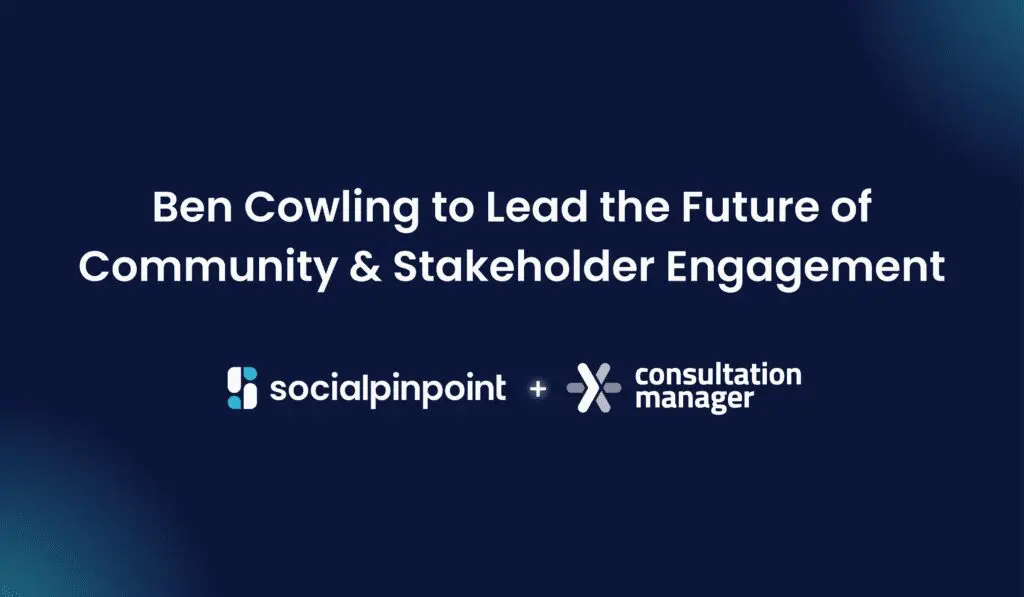We have come a long way in acknowledging that inclusive community engagement creates better outcomes, but not everyone is always given or can find a seat at the table. At times, we can exclude people due to a lack of awareness of the ongoing barriers and systemic factors that may impact them.
Inclusive engagement gives everyone in the community an opportunity to be involved in the decisions that affect their lives. However, no matter how hungry we are to be more inclusive, unless we actively seek to understand and expose public participation barriers, it can be very difficult to account for them in the design of our engagement strategies. Even when a diverse and representative cross-section of the public is engaged, people’s voices may not influence outcomes equally, as differences in power and privilege play out in the way that final decisions are made.
At times, the logistics of an engagement, like location and timing can conflict with other responsibilities, such as work or childcare. Many groups of people also face historic and ongoing marginalization due to their identity and lived experiences, such as race, ethnicity, religion, gender, sexual orientation, disability, socioeconomic background, and citizenship status. These groups can be under-represented in decision-making or engagement processes due to overt exclusion and/or inadvertently due to a lack of awareness of systemic physical, social, and financial barriers.
To help you draw participants who truly represent the demographic, attitudinal, and experiential diversity of your community, we have outlined the most common participation barriers that your community could be up against.
1. Lack of Time
Not all community groups have sufficient time, capacity, and resources to attend and respond to all engagement requests. It’s important to think about the timing of your engagement and compensation for those who need it. Parents and caregivers (many of whom are women) can find it difficult to participate in face-to-face engagement events. People who are employed can also find it difficult to attend during work hours.
2. Disability or Impairment
Disabled people can face accessibility barriers depending on the way that engagement is facilitated, and the location, facilities, supports, and technology should help them participate in a way that suits them best. For example, the use of interpreters, appropriate language, and subtitles need to be considered for physically and neuro-diverse people.
3. Distrust
People who have had negative experiences with governments or have had contact with the justice system may not be willing to share their thoughts and opinions with you. That’s why ongoing transparency and inclusion are so important. Make sure to consider whether or not people have positively experienced democratic processes before. You also need to honor Indigenous knowledge and world views, while acknowledging and equitably addressing the impact of past and present-day colonialism.
4. Digital Capability
People who spend less time online and have lower digital capability may not be able to participate in online community engagement and communications efforts effectively.
5. Privacy Concerns
Asking for a lot of personal data could make residents fear that they could be a victim of discrimination or experience a threat to their livelihood, so it’s important to be transparent about why you want particular information and explain how it will be used.
6. Language
It’s important to understand the various languages that are spoken within a community and offer multilingual services so that people can interpret and engage with materials in their preferred language. Matching the right language level for the audience is equally important. Imagine if you were trying to engage children or young people. Keep language welcoming, simple, and jargon-free.
7. Internet Access
Did you know that 37% of the world still does not use the internet? With more basic services moving online and the pandemic highlighting affordability challenges in wealthier nations, these deep digital gaps are intensifying inequality. People in rural communities can also have limited access to digital infrastructure and the internet.
8. Financial Strain
There are groups in the community that may experience financial strain as a result of participating in a community engagement initiative. It may not be feasible for them to take time away from work to attend a face-to-face meeting, or the costs of travel could be too high. It may be necessary to consider compensation for low-income groups and ensure that people’s time and expertise are valued appropriately.
9. Education Level
People have had varying levels of access to education throughout their lives and it’s important to provide the right amount of context and information to ensure that everyone has an equal understanding of the engagement process.
10. Location
People who live further away from the physical location of face-to-face consultations may find it difficult to attend. It’s also important to consider if your community members live in an area or travel through it regularly. Are they homeowners, renters, or are they experiencing homelessness?
Wouldn’t it be great if you had a checklist?
There is a lot to digest when you start to think about every possible barrier and how you might overcome it. That’s why we have also put together a public participation barrier checklist that will help you design, plan, and launch an inclusive community engagement strategy.
Before you embark on your next community engagement initiative, you can cross-check if you have addressed every participation barrier with every community stakeholder group throughout the planning, design, delivery, and review phases.
Before you go, we want you to know that this article is an excerpt from our upcoming Inclusive Community Engagement Guide for 2022, in which we share many more tangible steps that we can all take to become more inclusive. Subscribe to our monthly community engagement insights via email and be among the first to receive the guide.













